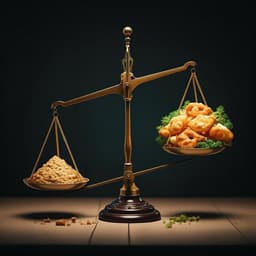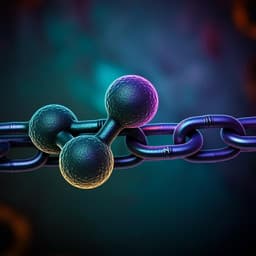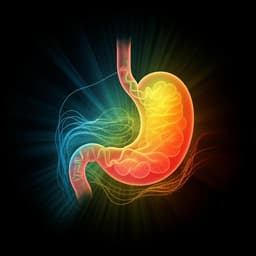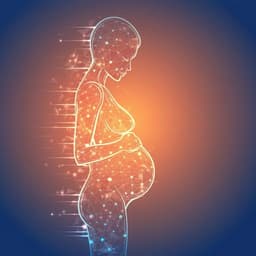
Food Science and Technology
A high sucrose detection threshold is associated with increased energy intake and improved post-prandial glucose response independent of the sweetness intensity of isocaloric sucrose solutions
V. Preinfalk, K. Schweiger, et al.
Explore how individual sweet taste perception affects energy intake and blood glucose regulation in this intriguing study conducted by Verena Preinfalk and colleagues at the University of Vienna. Discover the surprising link between sucrose detection thresholds and caloric consumption, leading to potential insights in nutritional science.
~3 min • Beginner • English
Introduction
Taste, particularly sweetness, is a key driver of food choice and intake, yet mechanistic links to satiety and energy balance remain unclear. Prior work suggests that sweet sensitivity may correlate with sweet food liking and potentially with body weight, but findings are inconsistent. Non-nutritive sweeteners (NNS) and activation of sweet taste receptors (TAS1R2/TAS1R3) in oral and extraoral tissues have been implicated in modulating insulin, incretins, and glucose homeostasis; however, evidence from randomized trials versus cohort studies is conflicting. The effect of individual sweet taste sensitivity on metabolic regulation is especially underexplored. The authors hypothesized that individuals with higher sensitivity to sweet taste would show stronger satiety hormone responses when receiving a sweeter vs less sweet isocaloric sucrose solution. The study investigated how modulating sweetness intensity of a 10% sucrose solution (using rebaudioside M to increase, lactisole to decrease) affects postprandial glucose regulation and energy intake in healthy men, accounting for individual sucrose detection thresholds, body composition, and sweet food preferences.
Literature Review
- Sweet sensitivity and preference: Some studies report that higher sweet sensitivity (lower thresholds) associates with decreased preference for sweet taste, while others report positive correlations or no association. Sweet liking is commonly assumed to contribute to weight gain.
- Sugars and body weight: Global sugar intake increased in parallel with obesity rates historically, but recent declines in sugar intake have not halted rising obesity prevalence. Controlled trials and reviews suggest simple sugars do not uniquely drive weight gain compared with other macronutrients, though sugar-sweetened beverages (SSBs) are less satiating and linked to adverse outcomes.
- Non-nutritive sweeteners (NNS): WHO review indicates short-term NNS use slightly reduces weight and BMI without clear cardiometabolic impacts, whereas cohort studies link higher NNS intake to greater body weight and risk of T2D and CVD, potentially due to reverse causation.
- Sweet taste receptor (TAS1R2/TAS1R3): Expressed in oral and gastrointestinal tissues; activation by caloric and non-caloric sweeteners may influence cephalic insulin, incretins (GLP-1, GIP), serotonin, and energy intake. Prior findings are mixed: saccharin can increase cephalic insulin without altering glucose; sucralose combined with carbohydrate may impair insulin sensitivity; sucralose increased GLP-1 and tended to increase GIP in some populations. Prior work from the authors showed carbohydrate type had a stronger effect on glycemia than perceived sweetness, and that lactisole with sucrose (but not glucose) increased energy intake, suggesting interplay between glucose transporters and sweet taste receptors.
- Determinants of sweet thresholds: Affected by age, sex, BMI, smoking, alcohol, obesity, and T2D, with inconsistent associations between BMI and sucrose detection thresholds. Higher sweet thresholds have been linked to higher blood glucose and T2D.
Overall, evidence suggests potential roles for sweet taste perception and receptor activation in energy intake and glucose regulation, but the impact of individual sensitivity remains unclear and requires controlled investigation.
Methodology
Design: Single-blinded, randomized, four-period cross-over human intervention study. Each participant received four test solutions on separate days (≥7 days washout). Approved by University of Vienna ethics committee (00568 and 00583). Registered at ClinicalTrials.gov (NCT04991714). Written informed consent obtained.
Participants: Healthy males, 18–45 years, BMI 18.5–29.9 kg/m²; exclusions included fasting glucose >120 mg/dL, chronic/metabolic diseases (e.g., T2D), tobacco use, medications, alcohol/drug abuse, taste disorders, and allergies/intolerances. Women were excluded to avoid menstrual-cycle related variability. Of 35 recruited, 30 passed screening; 29 completed all treatments.
Baseline screening: Medical exam; standard 75 g OGTT with capillary glucose at 0, 15, 30 min and venous glucose at 0, 60, 120 min; fasting hematology and lipids; blood pressure; anthropometrics (stadiometer, scale). Body composition (body fat, fat-free mass) and resting metabolic rate (RMR) measured by Bod Pod. SCOFF questionnaire to exclude eating disorders; health and diet screening questionnaires.
Sucrose detection threshold and sensory training: On screening day, sucrose detection threshold determined per DIN EN ISO 3972:2013-12 using ascending concentrations (0.32–20 g/L). Threshold defined as the first concentration correctly identified as sweet. Sweetness intensity ratings conducted on a 0–10 cm unstructured line scale after scale training with five sucrose concentrations (0–100 g/L). Sip-and-spit protocol, water rinse between samples.
Grouping by sensitivity: Participants categorized into low sweet taste threshold (0.55–4.32 g/L) and high sweet taste threshold (7.2–20 g/L) using a 4.32 g/L cut-off based on prior literature.
Interventions (300 mL each):
- TS1: 30 g sucrose in water (10% w/v; reference).
- TS2: 30 g sucrose + 18 mg rebaudioside M (sweeter than TS1).
- TS3: 30 g sucrose + 18 mg rebaudioside M + 9 mg lactisole (equi-sweet to TS1).
- TS4: 30 g sucrose + 9 mg lactisole (less sweet than TS1).
Randomization: Order assigned via randomizer.org; participants blinded to treatment order (single-blind).
Study day procedures: After 12 h fast, baseline finger-prick glucose and venous blood (t0) collected via peripheral IV catheter. Participants consumed the test solution within 5 min. Immediate post-consumption sweetness rating on 0–10 cm unstructured scale (no scale training). Venous blood drawn at 15, 30, 60, 90, and 120 min post-ingestion. Subjective hunger assessed via 10 cm visual analogue scale (VAS) at each timepoint (0–120 min). At 120 min, an ad libitum standardized continental breakfast (total energy ~11.3 MJ; 46% CHO, 41% fat, 13% protein) was served; energy intake quantified by back-weighing leftovers and analyzed with nut.s v1.32.50. Vegetarian/vegan isocaloric alternatives provided when needed.
Analytes: Plasma glucose (colorimetric assay), insulin (ELISA), glucagon (ELISA), GLP-1 (ELISA), GIP (ELISA), serotonin (competitive ELISA), and leptin (ELISA). Sample handling: EDTA tubes (centrifuged 1800×g, 4 °C, 15 min; stored −80 °C); serotonin samples additionally centrifuged 1 min at 7000×g to remove platelets; glucose in fluoride tubes; insulin in heparin tubes.
Sweetness perception assessments: Sensory setting with scale training (screening day) and immediate study-day ratings without training. Ability to discriminate sweetness levels compared between threshold groups.
Questionnaires: Online Food Frequency Questionnaire (FFQ) covering 20 sweet food items (8 frequency options from never to several times/day), grouped into categories; and a liking questionnaire with seven sweet-food categories rated from 0 (dislike) to 4 (like very much). Category scores summed for overall liking.
Outcomes: Primary metabolic responses (glucose, insulin, glucagon, GLP-1, GIP, serotonin) over 120 min; subjective hunger over time; 2 h post-load energy intake; associations with perceived sweetness and sucrose detection threshold.
Statistics: R 4.2.2 with WRS2 package. Robust two-way ANOVA on medians for treatment, threshold group, and interaction; post hoc median-based comparisons. Incremental ΔAUC (baseline-corrected) by trapezoidal rule (caTools::trapz): positive ΔAUC for glucose/insulin; net ΔAUC for GLP-1, GIP, glucagon, serotonin. Peak levels compared via robust two-way ANOVA. Between-group t-tests for leptin, % body fat, FFQ and liking scores. Correlations (Spearman) between sucrose detection thresholds and plasma markers. Significance typically p < 0.05. Power analysis (G*Power 3.1): target n=30 (effect size 0.51, power 0.85, alpha 0.05).
Key Findings
- Sweetness modulation had no effect: Adjusting perceived sweetness of an isocaloric 10% sucrose solution with rebaudioside M and/or lactisole did not alter postprandial plasma glucose, insulin, glucagon, GLP-1, GIP, or serotonin over 120 min, nor 2 h post-load energy intake. AUCs for glucose and insulin did not differ by treatment or by threshold group.
- Energy intake driven by sucrose detection threshold: Independent of treatment, participants with a higher sucrose detection threshold consumed on average 402 ± 78.8 kcal (39 ± 21%) more during the ad libitum breakfast than those with a low threshold (p < 0.01). No correlation was observed between perceived sweetness of the test solution and energy intake.
- Hunger ratings: Total hunger (AUC) did not differ by treatment. High-threshold group reported lower hunger than low-threshold group (p < 0.05), though mean hunger over time did not differ.
- Glucose/insulin ratio: High-threshold group exhibited a higher glucose/insulin ratio overall (p < 0.05), suggesting a better postprandial glucose response, without differences in HOMA-IR or QUICKI.
- Incretins and hormones: Overall GLP-1, glucagon, and serotonin responses did not differ by treatment or threshold group. GIP concentrations were overall higher in the low-threshold group than in the high-threshold group (p < 0.05), though baseline-normalized GIP responses (ΔAUC) to sucrose did not differ between groups.
- Sweetness perception and discrimination: Low-threshold participants discriminated sweetness differences between solutions after scale training; high-threshold participants showed poorer discrimination, identifying only the least sweet (sucrose + lactisole) as distinct. Study-day (untrained) ratings showed generally lower perceived sweetness and fewer participants distinguishing levels.
- Body composition and liking: BMI was similar between groups. High-threshold group tended to have lower body fat (13.2 ± 7.1% vs 17.34 ± 8.5%; p = 0.06), higher RMR (1763 ± 276 vs 1621 ± 178 kcal/day; p = 0.08), and higher RMR/FFM (p = 0.06). Leptin did not differ. FFQ consumption of sweet foods did not differ, but the high-threshold group reported higher liking scores for sweet foods (p < 0.01).
Discussion
The findings do not support a role of perceived sweetness intensity per se in regulating short-term energy intake or postprandial glucose and hormonal responses when caloric load is held constant. Instead, individual sweet taste sensitivity, indexed by sucrose detection threshold, related to behavioral and metabolic outcomes: higher thresholds associated with greater energy intake and a higher glucose/insulin ratio, indicative of a more favorable postprandial glycemic response. The absence of treatment effects on GLP-1, GIP, glucagon, and serotonin suggests that oral/extraoral TAS1R activation through sweetness modulation of sucrose was not a dominant driver under these conditions.
Differences between threshold groups may reflect underlying physiology, notably trends toward lower body fat, higher RMR, and potentially greater fat-free mass in the high-threshold group, which are known determinants of energy intake and may influence insulin sensitivity. Lower overall GIP in the high-threshold group may align with better insulin sensitivity, though baseline-normalized responses did not differ, and incretin changes did not explain glucose-insulin dynamics fully. Glucagon and serotonin showed no group or treatment differences, suggesting the carbohydrate load and caloric content rather than sweetness perception governed their regulation.
Collectively, the data indicate that individual sweet detection thresholds, sweet liking, and body composition interplay more strongly in shaping energy intake and postprandial glucose handling than the acute perceived sweetness of a carbohydrate-containing beverage. These results align with prior work from the authors showing carbohydrate type has a stronger impact than sweetness on glycemia, and suggest that extraoral TAS1R blockade effects (e.g., with higher lactisole doses) may be context- and dose-dependent. Future research should control for physical activity and fat-free mass, include women to evaluate sex-specific effects, and explore mechanistic links between sweet sensitivity, receptor expression, and metabolic regulation.
Conclusion
Perceived sweetness intensity of isocaloric sucrose beverages did not affect post-load energy intake or postprandial glucose and hormone responses in healthy men. However, individuals with higher sucrose detection thresholds consumed more energy 2 h post-load and exhibited a higher glucose/insulin ratio, alongside greater liking for sweet-tasting foods. These associations likely interact with body composition (e.g., higher fat-free mass and RMR) rather than sweetness perception alone. Future studies should include both sexes, assess physical activity and fat-free mass as covariates, and investigate whether sucrose detection thresholds relate to TAS1R expression in oral and gastrointestinal tissues.
Limitations
- Participants were exclusively healthy males; results may not generalize to females or individuals with impaired glucose tolerance or metabolic disease.
- Physical activity was not directly assessed; differences in activity and fat-free mass/RMR may confound energy intake and metabolic outcomes.
- The carbohydrate dose (30 g sucrose) is lower than standard OGTT loads, potentially limiting detection of differences in some hormones (e.g., glucagon).
- Sample size was modest; larger studies are needed to disentangle effects of sweet sensitivity from body composition and to include sex-specific analyses.
Related Publications
Explore these studies to deepen your understanding of the subject.







